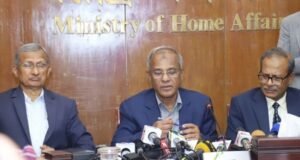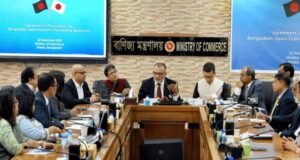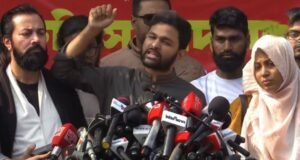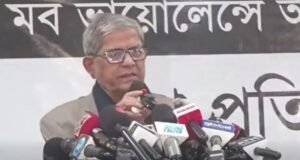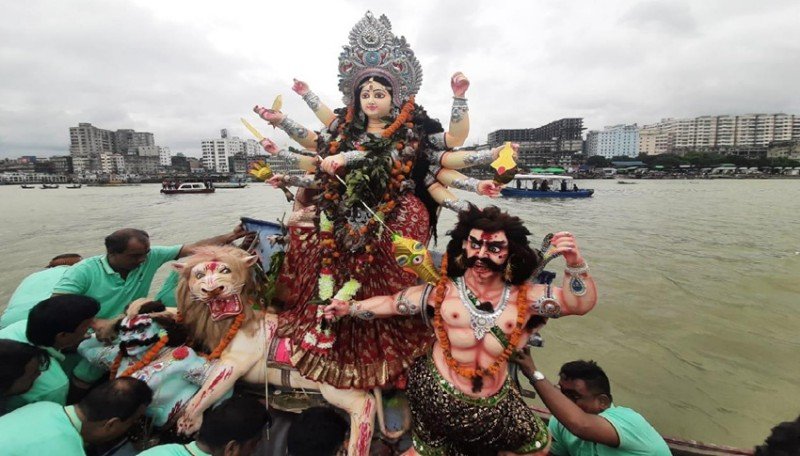
The five-day Durga Puja festival, the largest annual religious celebration of the Bengali Hindu community, came to a close on Thursday with the immersion of Durga’s idols in rivers and water bodies across the country amid colour, music and emotion.
In keeping with Hindu tradition, devotees believe that following the immersion, the goddess returns to her celestial abode in Kailash, the home of her husband, Lord Shiva.
In Dhaka, thousands of worshippers gathered along the banks of the Buriganga River to witness the final ritual of the festival.
Devotees arrived in colourful processions, transporting the elaborately decorated idols of Durga and her children; Lakshmi, Saraswati, Kartik and Ganesh, on trucks, accompanied by rhythmic sounds of dhak, shankha and other traditional instruments.
Chanting hymns and offering prayers, they bid farewell to the goddess with hopes and invitations for her return in the coming year.
One of the key rituals observed during Bijoya Dashami was Sindur Khela, where married women smeared vermilion (sindur) on the feet of the goddess and then on each other, praying for happiness and long-lasting prosperity.
The ritual is both a farewell to the goddess and a celebration of feminine strength and solidarity.
This year, Durga Puja was celebrated at around 33,355 mandaps nationwide, including hundreds in the capital.
The festivities began on September 28 with Bodhon; the ceremonial awakening of the goddess, marking the start of Shashthi, the first day of worship.
Durga Puja, also called Sharadiya Utsab, is more than just a religious event; it is a cultural celebration of the victory of good over evil.
The goddess, symbolising divine power or Shakti, is believed to have defeated the demon Mahishasura, restoring peace and balance to the universe.
As the final idol disappeared beneath the water, chants of “Asche bochhor abar hobe” (“She will return next year”) echoed through the air, marking the end of the festival with the promise of renewal and reunion.
 Weekly Bangla Mirror | Bangla Mirror, Bangladeshi news in UK, bangla mirror news
Weekly Bangla Mirror | Bangla Mirror, Bangladeshi news in UK, bangla mirror news


